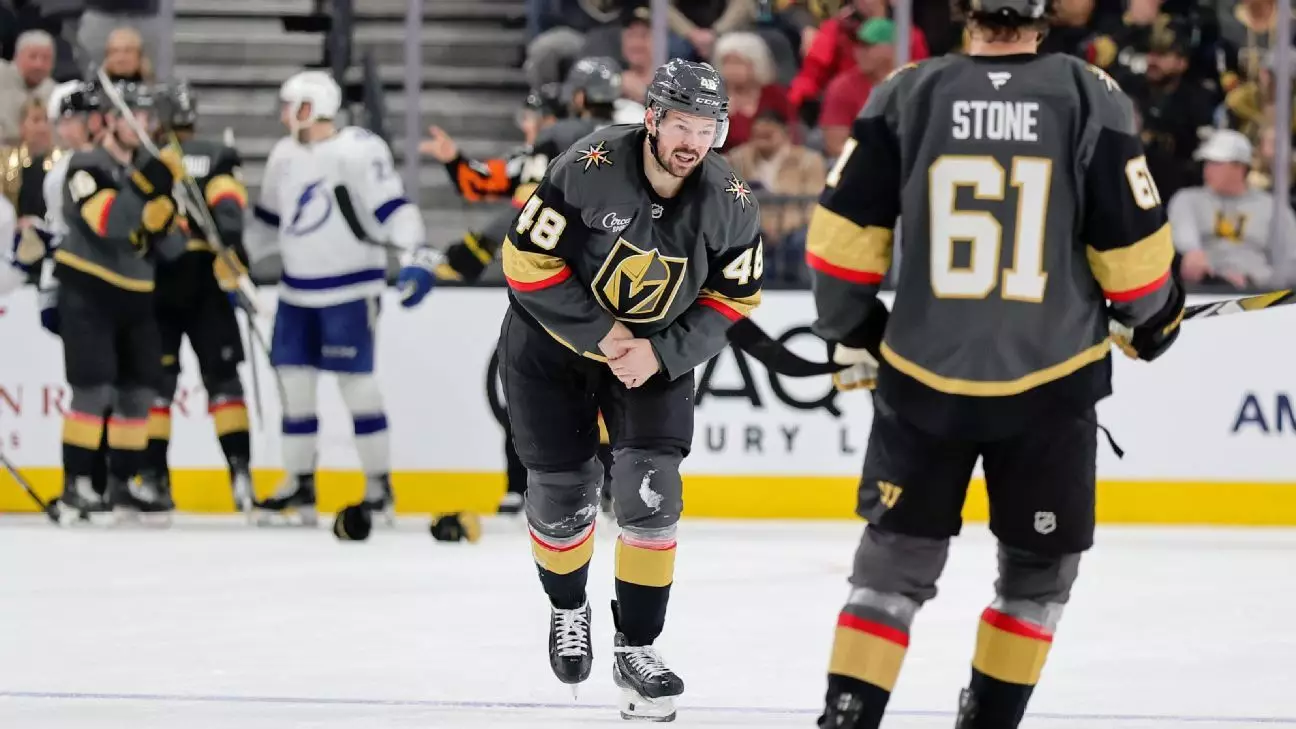In a much-anticipated return, center Tomas Hertl stepped back onto the ice for the Vegas Golden Knights, significantly boosting team morale. His absence following an upper-body injury caused by a collision with Tampa Bay’s Emil Lilleberg had left a noticeable gap in the Knights’ performance. Hertl’s injury occurred on March 23 during a compelling match, yet his recovery period was commendably brief, clocking in at just two weeks. “It’s nice to be with the guys again and be part of the team,” Hertl expressed after his morning skate, highlighting the camaraderie that sports often fosters.
Before his battle with injury, Hertl was a linchpin for the team, leading the Golden Knights with an impressive tally of 31 goals. However, in his absence, Pavel Dorofeyev seized the spotlight, now holding the team-lead with 33 goals. The underlying message here underscores the dynamics of team sports—how one member’s absence can lend more room for others to step up and shine.
The Power Play Paradox
One of the most significant dimensions of Hertl’s absence was felt in the team’s power play performance. The Knights had set the precedent for a remarkable special teams unit, boasting a conversion rate exceeding 30%. The missing piece—Hertl—had etched his name in the franchise record books by achieving a club-high of 14 power-play goals prior to his injury. The correlation is clear; since Hertl’s injury, the Golden Knights have struggled, failing to score on their last ten power play opportunities. This kind of drought, spanning five games, reflects the critical importance of having a potent offensive presence during power plays—a niche at which Hertl excelled.
“His interior presence is missed,” lamented coach Bruce Cassidy. The impact of having someone who can draw defenders and create open lanes cannot be overstated. The expectation is that with Hertl back in the lineup, the power play’s effectiveness will rebound.
A Shared Burden and a Collective Future
In addition to Hertl’s return, the Knights have been grappling with various injuries to other key players, including Jack Eichel and defenseman Alex Pietrangelo. Such setbacks create a complex environment in the locker room, where team strategies must adapt to ongoing challenges. Yet, it is noteworthy that players like Nicolas Hague, who recently returned from illness, are beginning to reintegrate, allowing for a more cohesive team rallying.
Hertl’s reunion with his line, consisting of Dorofeyev and Brandon Saad, promises a revitalization of their previous chemistry, a crucial element in pushing the Golden Knights back into the upper echelon of NHL contenders. The synergy between players plays a significant role in harnessing the latent potential of the team.
While setbacks are sinews of sports narratives, with injuries and absences both frustrating and disappointing, they also sculpt opportunities for resilience and camaraderie. As the Golden Knights regain their core players, the hope resides in rekindling their previous form and taking their game to new heights. The return of Tomas Hertl not only signifies the reclaiming of lost ground but also serves as a testament to the power of teamwork and recovery in the realm of professional sports.


Leave a Reply